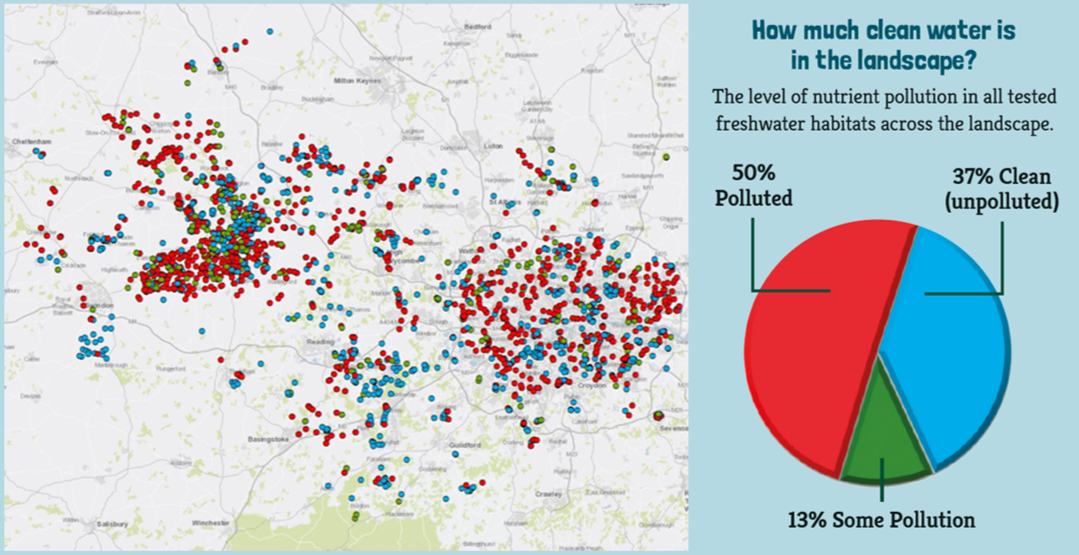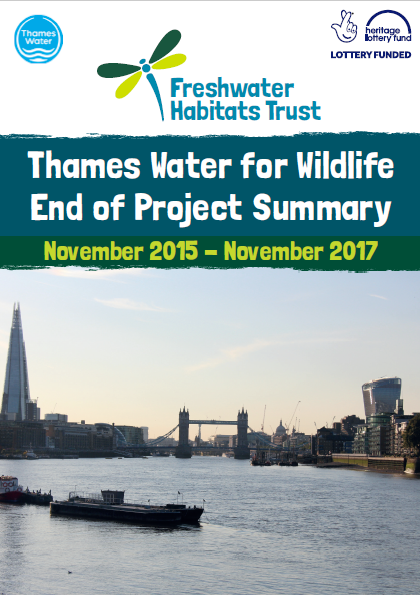Citizen science reveals clean water hotspots
12th December 2017
Are the ponds, streams and ditches in your neighbourhood good enough for wildlife?

Over the last two years volunteers have been using quick test kits to discover amazing unpolluted freshwaters, where wildlife can thrive, across the Thames Water region. The results are in, with some interesting revelations.
Clean water supports rich and diverse wetland plant and animal communities. Sadly it only takes a little pollution to cause the loss of much of this wildlife. Nutrient pollution has quickly become one of the most pervasive threats to freshwater wildlife, with nutrients feeding in from both urban and rural sources. When we add more nutrients we cause profound changes to the freshwater environment and the wildlife can’t cope.
Despite the importance of clean water, very little was known about the water quality in 99% of our smaller waters: the ponds, small streams and ditches, places that support so much life. Thanks to support from Thames Water and the Heritage Lottery Fund, Freshwater Habitats Trust was able to launch Thames Water for Wildlife to find out more. The project aimed to discover the clean water gems – habitats free from nutrient pollution – and to reveal the extent of nutrient pollution facing freshwater life today.
Where was the clean water found?
Over 3000 different waterbodies, from tiny trickles and pools to roaring torrents and vast lakes, were tested for nitrate and phosphate pollution. Out of these 37% were clean water gems, waterbodies that were free from both nitrate and phosphate pollution. 13% showed signs of some pollution and the remaining 50% were highly polluted.
Even in the heavily urbanised and intensively farmed Thames region, clean water can still be found in the landscape. It appears that most is concentrated in the ponds and lakes, with almost all rivers and most streams suffering serious nutrient pollution. The likely reason for this difference is that river networks drain water from such huge areas of land. Some of this water is inevitably polluted with nutrients from roads, factories and agricultural land. In contrast, some ponds and smaller headwater streams can escape pollution because they only collect water from small, local areas. If these small drainage areas are mainly woodland, fen or unimproved grassland, the ponds and streams stay clean. Gravel pit lakes—dug into gravel aquifers—are also a place where clean water can be found.
The project has been an outstanding success—helping thousands of people to connect with their local freshwater environment. The findings have revealed much more about the clean water hotspots: areas we should be protecting as wildlife refuges, and locations where we can extend the network of clean waters by making ponds, or extending downstream from clean streams or ditches. The project has highlighted that we all need to champion the fantastic clean water habitats we have now and celebrate the fascinating plants and animals they support.
To find out more please see the Thames Water for Wildlife Summary Report

